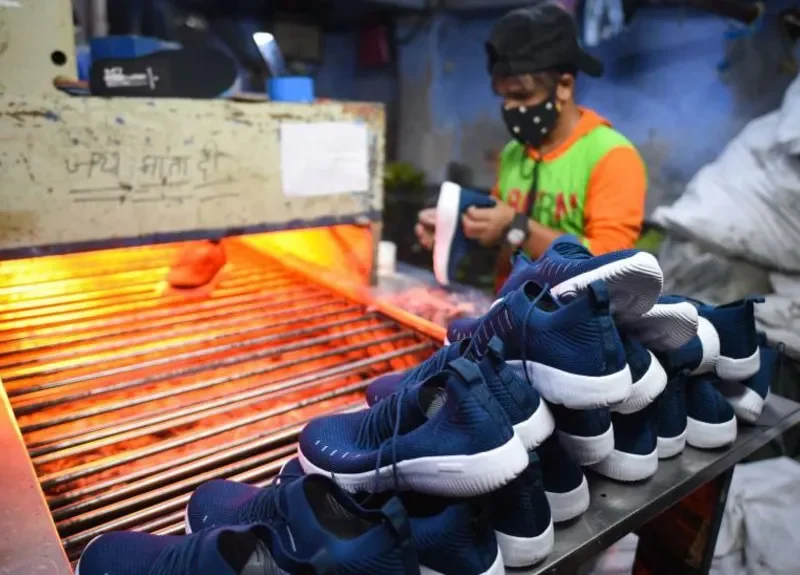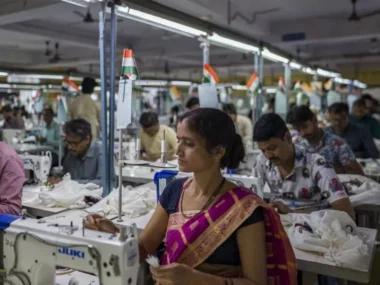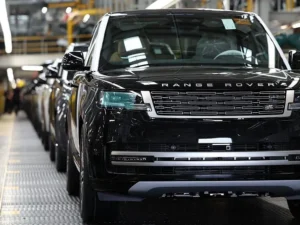You might not be familiar with Taiwan’s Hong Fu Industrial Group, but chances are you’ve seen its footwear on the streets.
As the world’s second-largest sneaker manufacturer, Hong Fu supplies major brands like Nike, Converse, Adidas, and Puma, producing roughly 200 million pairs of athletic shoes annually.
So when the company decided to invest significantly in India, the global footwear sector took notice.
Hong Fu is currently constructing a massive facility in Panapakkam, Tamil Nadu, in southeastern India. Once fully operational in three to five years, the factory is expected to produce 25 million pairs of shoes annually and employ up to 25,000 people.
The initiative includes local collaborators like Aqeel Panaruna, chairman of Florence Shoe Company. “With global markets already saturated, Hong Fu saw India as a promising new frontier,” he explains.
He notes a sharp rise in demand for non-leather footwear in India, highlighting its strong growth potential. The Indian government also supports such investments, aiming to enhance the industry’s quality standards and boost exports.
To encourage this shift, the Bureau of Indian Standards (BIS) introduced new quality regulations last August for all footwear sold in the country. These rules include rigorous testing for durability and flexibility.
According to journalist and footwear expert Sandeep Sharma, “The new BIS standards aim to clean up the market. There’s been a flood of poor-quality imports, and Indian consumers deserve better.”

India has an extensive network of small-scale footwear manufacturers.
Many people in India can’t afford footwear from major global brands.
To meet their needs, a vast and complex network of small-scale shoemakers—often called the unorganised sector—provides more affordable options. These local producers are believed to supply around two-thirds of all footwear sold in the country.
Ashok, a manufacturer based in Agra (who withheld his full name), considers himself part of this sector. He oversees multiple production units across the district and estimates that around 200,000 pairs of shoes are produced daily by businesses like his.
“People in rural and lower-income urban areas usually choose affordable local shoes over branded ones,” he explains. “Large brands often struggle to reach these areas because we already serve those markets.”
But what impact will the new government regulations have on manufacturers like Ashok?
“It’s a complex issue,” says footwear expert Sandeep Sharma. “The government is trying to strike a balance. Shutting down these small businesses would be economically disastrous since they provide employment to millions.”
Instead, he notes, the government is applying a “carrot-and-stick” strategy—enforcing new standards while also offering support to help smaller producers upgrade their operations. The goal isn’t to eliminate the unorganised sector but to gradually formalise it.
However, the situation is further complicated by the fact that this sector is also known for producing counterfeit versions of well-known brands. While these knock-offs are popular with shoppers seeking fashionable yet cheap footwear, they have triggered complaints from other countries over financial losses.

Zen Barefoot is working to raise awareness and promote the use of barefoot shoes in India.
A wave of new Indian sneaker brands is emerging to cater to the country’s expanding middle class.
Among them is Sabhib Agrawal, who is aiming to spark interest in barefoot shoes—footwear designed to support natural movement and foot health. His company, Zen Barefoot, stands out in an industry he describes as lacking innovation.
“Very few in India are willing to invest time and resources into new technologies,” Agrawal says. “The market is heavily driven by profits and ROI. Even government support is limited, with little in the way of grants or tax incentives, which adds to the challenge.”
One company pushing the innovation boundary is Comet. It claims to be India’s first homegrown sneaker brand to control the entire production process—from design to manufacturing.
“This level of vertical integration lets us experiment with materials, develop new designs, and fine-tune comfort based on actual user feedback,” says Comet’s founder, Utkarsh Gupta.
He adds that Comet’s shoes are tailored to suit India’s climate and road conditions. “Many local brands use standard market soles, but we found them lacking in durability and grip. So we developed our own.”
Gupta believes the Indian footwear industry is entering a new phase. “The shift to high-value products is underway,” he says. “More premium brands will likely relocate manufacturing to India. In the next three to five years, we expect a strong ecosystem capable of competing globally in the sneaker market.”

Comet Shoes manages both its design and manufacturing in-house.
In Agra, Ashok hopes the unorganised sector won’t be overlooked as India’s footwear industry expands.
He urges, “The government should grant us accreditation and certification so our factories can keep operating. If we’re brought into the organised sector, India can become unbeatable in shoe manufacturing.”
However, Sandeep Sharma believes transformation is unavoidable.
“The market is bound to evolve. Larger companies will grow even more because they have the resources to adapt quickly,” he says. “But I don’t think small players will vanish entirely—those who adapt smartly will carve out their own space.”











